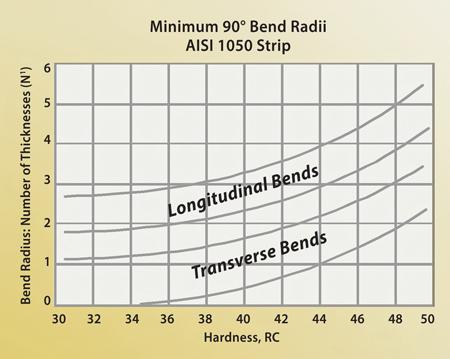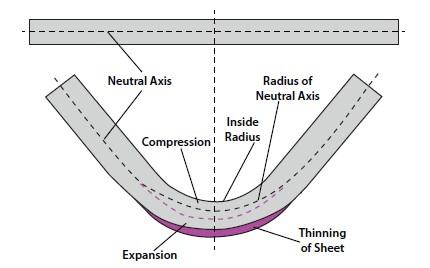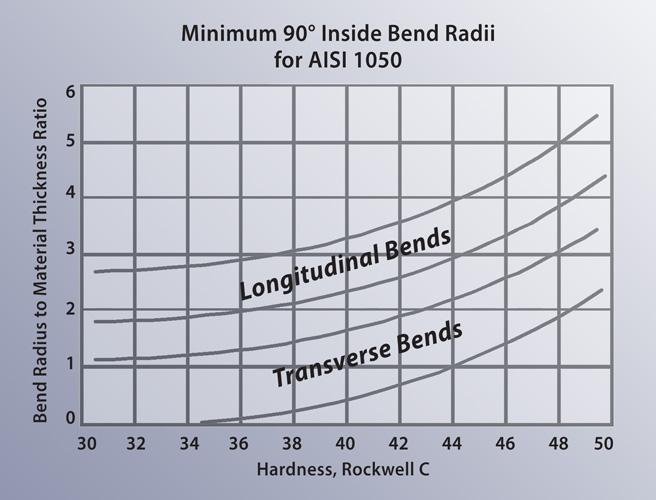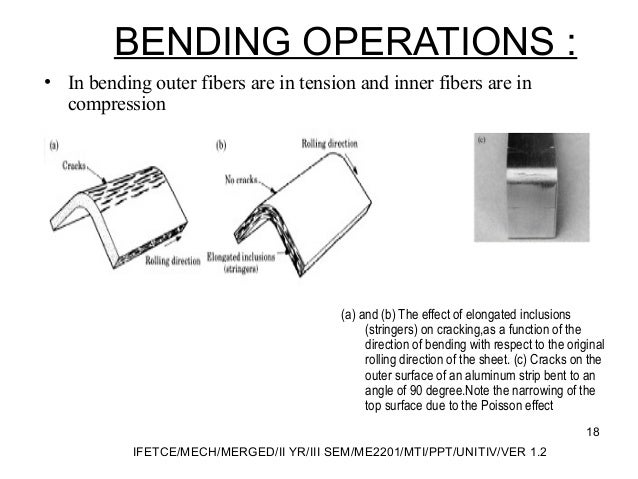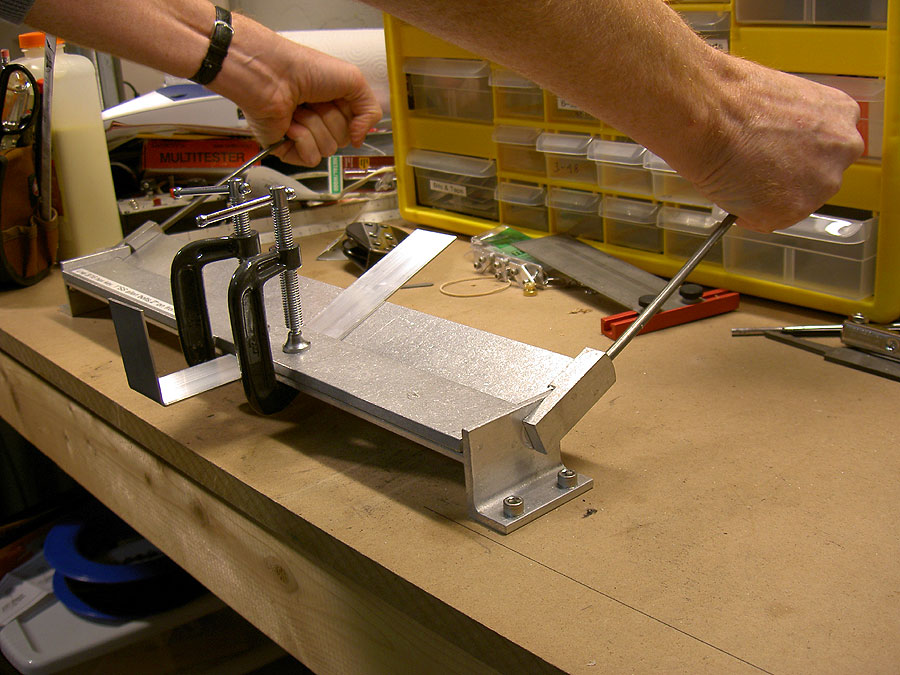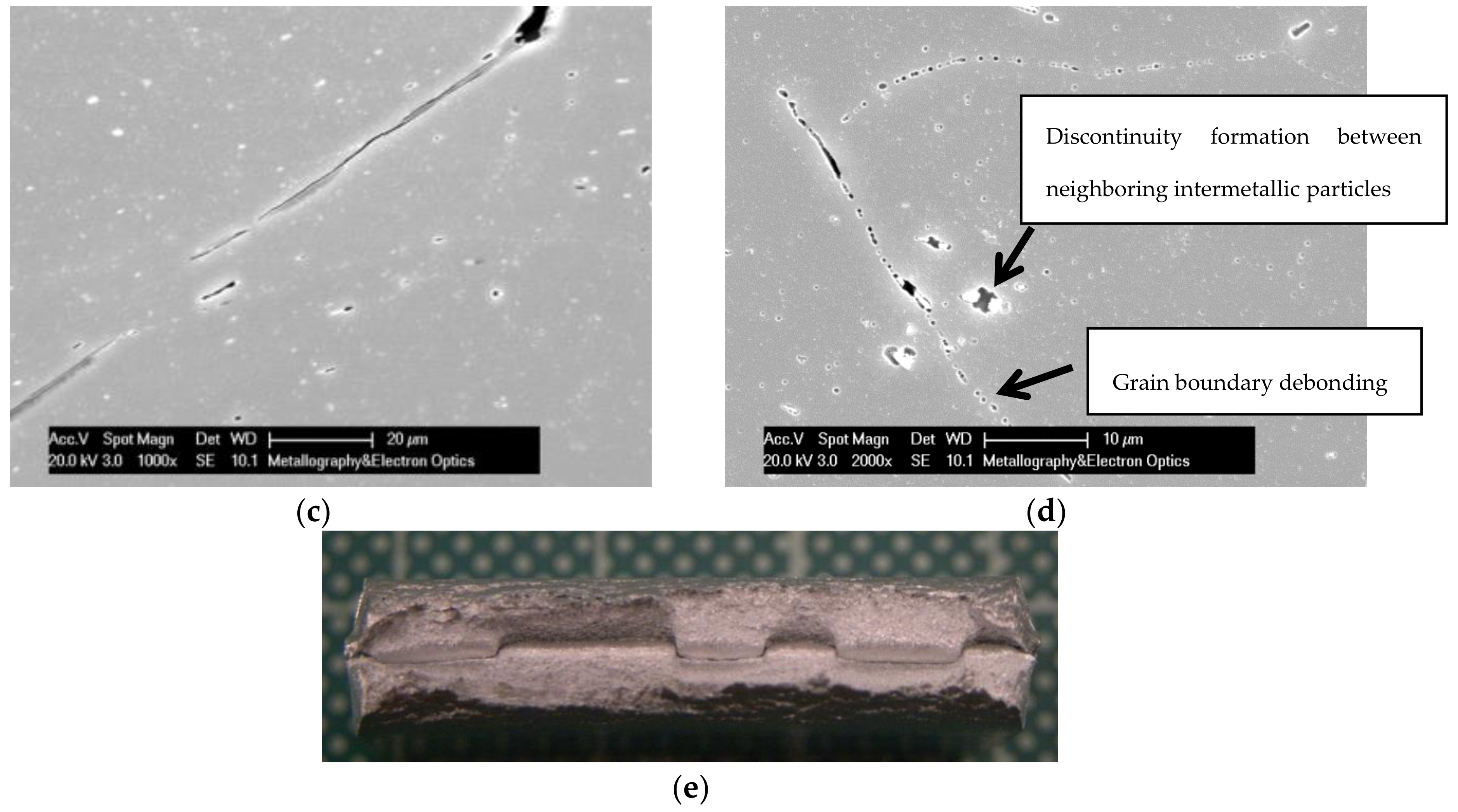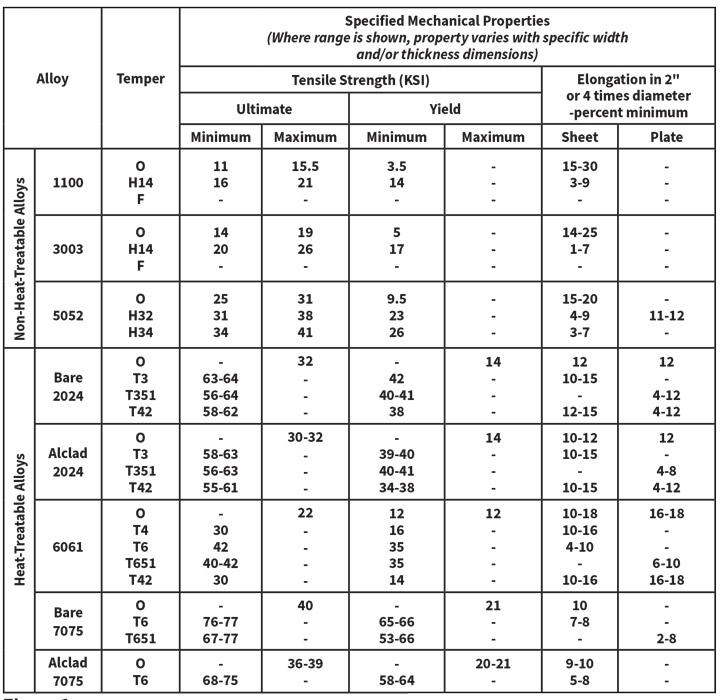You must pay careful attention to grain or rolling direction when bending high strength metals especially when trying to achieve a small inside bend radius.
Bending aluminum sheet grain.
Inside bend radius 0 19.
Bending 2024 t3 grain direction considered.
The harder and thicker the plate is the greater the minimum bend radius.
For 0 5 in thick 7050 aluminum the minimum bend radius may be specified as much as 9 5 times material thickness.
Also know that for the best results and fewer cracks on the outside of the bend the bend line should go across or diagonal to the material grain when and where possible.
Bending with the grain gives a different result than bending against it.
General advice on aluminum.
Again the minimum inside bend radius is even larger when bending with the grain.
Bend angles also can be less consistent.
A common way to prevent material failure or cracking is by bending the metal against the grain or perpendicular to the grain.
This could be either problematic or catastrophic depending on the application of the end product.
When bending aluminum know that the smaller your inside bend radius the larger the chance that cracking will occur in the part.
Bending with the grain may result in cracking or.
Bending the sheet metal longitudinally with the grain allows those grains to separate at the grain boundaries.
Bending with the grain also limits how tight of an inside bend radius you can achieve without cracking the outside of the bend.
The bend is along the long dimension.
Pieces 22 long by 1 75 wide by 0 63 thick.
If you re bending 0 020 thick material use a 0 020 radius.
For most applications with stainless steel or aluminum you can get away with a zero radius bend on anything under 0 050 thick.
The grain direction is established during the metal rolling process.
The trend is obvious.
That said forming with the grain takes less pressure to make a bend.




